Project description
Bioprinting bladder tissue
Certain conditions, including inflammation and cancer, require augmentation of the urinary bladder. However, the conventional approach of using bowel tissue suffers from risks and post-surgery complications. The EU-funded UroPrint project proposes to engineer bladder tissue for autologous transplantation using laser-induced forward transfer (LIFT) bioprinting technology. Using a prototype bioprinter, researchers will graft primary urothelial and smooth muscle cells onto a natural scaffold ensuring high cell viability and mimicking the function of the human bladder. UroPrint is expected to improve clinical outcomes and the quality of life of patients by reducing hospitalisation.
Objective
A number of conditions, including trauma, inflammation, incontinence, overactive bladder, renal impairments, neurological disorders (like spinal cord injury or spina bifida) and cancer, require bladder augmentation. For almost a century now, the majority of cystoplasties utilize bowel segments (enterocystoplasty). This, almost a century years old, gold standard practice bears numerous risks and complications affecting the majority of patients, thus compromising the quality of life while burdening the health care systems. This has fuelled efforts towards the development of engineered bladder tissue. Advancements in bioprinting technologies are increasingly employed in regenerative medicine but mostly in smaller and less complicated tissues. UroPrint proposes the use of Laser Induced Forward Transfer (LIFT) to generate bladder tissue for autologous transplantation that would meet the biological, mechanical and functional properties of human bladder. To this end, primary urothelial and smooth muscle cells will be obtained from healthy donors and expanded in fully Good Medical Practice compliant methodologies. These will be combined with novel natural autologous scaffold material obtained from platelet lysates. Then, a novel approach in the generation of bladder transplant will be utilized, combining intestine denudation and in vivo printing during surgery using a novel prototype LIFT printer that achieved high spatial resolution (<10 μm), high cell viability (>95%) single-urothelial cells.
Fields of science (EuroSciVoc)
CORDIS classifies projects with EuroSciVoc, a multilingual taxonomy of fields of science, through a semi-automatic process based on NLP techniques. See: The European Science Vocabulary.
CORDIS classifies projects with EuroSciVoc, a multilingual taxonomy of fields of science, through a semi-automatic process based on NLP techniques. See: The European Science Vocabulary.
- medical and health sciences medical biotechnology tissue engineering
- medical and health sciences clinical medicine transplantation
You need to log in or register to use this function
We are sorry... an unexpected error occurred during execution.
You need to be authenticated. Your session might have expired.
Thank you for your feedback. You will soon receive an email to confirm the submission. If you have selected to be notified about the reporting status, you will also be contacted when the reporting status will change.
Keywords
Project’s keywords as indicated by the project coordinator. Not to be confused with the EuroSciVoc taxonomy (Fields of science)
Project’s keywords as indicated by the project coordinator. Not to be confused with the EuroSciVoc taxonomy (Fields of science)
Programme(s)
Multi-annual funding programmes that define the EU’s priorities for research and innovation.
Multi-annual funding programmes that define the EU’s priorities for research and innovation.
-
H2020-EU.1.2. - EXCELLENT SCIENCE - Future and Emerging Technologies (FET)
MAIN PROGRAMME
See all projects funded under this programme -
H2020-EU.1.2.1. - FET Open
See all projects funded under this programme
Topic(s)
Calls for proposals are divided into topics. A topic defines a specific subject or area for which applicants can submit proposals. The description of a topic comprises its specific scope and the expected impact of the funded project.
Calls for proposals are divided into topics. A topic defines a specific subject or area for which applicants can submit proposals. The description of a topic comprises its specific scope and the expected impact of the funded project.
Funding Scheme
Funding scheme (or “Type of Action”) inside a programme with common features. It specifies: the scope of what is funded; the reimbursement rate; specific evaluation criteria to qualify for funding; and the use of simplified forms of costs like lump sums.
Funding scheme (or “Type of Action”) inside a programme with common features. It specifies: the scope of what is funded; the reimbursement rate; specific evaluation criteria to qualify for funding; and the use of simplified forms of costs like lump sums.
RIA - Research and Innovation action
See all projects funded under this funding scheme
Call for proposal
Procedure for inviting applicants to submit project proposals, with the aim of receiving EU funding.
Procedure for inviting applicants to submit project proposals, with the aim of receiving EU funding.
(opens in new window) H2020-FETOPEN-2018-2020
See all projects funded under this callCoordinator
Net EU financial contribution. The sum of money that the participant receives, deducted by the EU contribution to its linked third party. It considers the distribution of the EU financial contribution between direct beneficiaries of the project and other types of participants, like third-party participants.
115 27 ATHINA
Greece
The total costs incurred by this organisation to participate in the project, including direct and indirect costs. This amount is a subset of the overall project budget.


